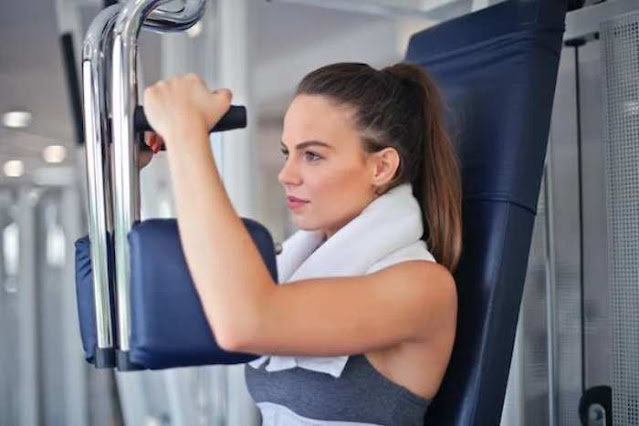- Get link
- X
- Other Apps

A well-developed chest enhances your physique. Whether
you're a learner or a seasoned fitness enthusiast, incorporating effective
chest workouts into your routine is essential for building muscle mass,
improving posture, and boosting performance in various physical activities. This
comprehensive guide will provide valuable tips and techniques to maximize your
chest workout and develop a strong upper body. From exercise selection to
proper form and progression, seam us as we explore the key factors contributing
to a successful and rewarding chest training regimen.
I. Understanding the Chest Muscles
Anatomy of the Chest: Gain insight into the structure and
function of the chest muscles, including the pectoralis major and minor, as
well as their role in shoulder movement and stability.
Chest Training Benefits: Explore the benefits of a
well-developed chest, such as improved upper body strength, enhanced posture,
increased power for pushing movements, and a more balanced physique.
II. Essential Exercises for the Chest
Bench Press: Master the bench press, a staple exercise for
chest development, and understand variations such as flat, incline, and decline
bench presses.
Dumbbell Press: Learn about the advantages of incorporating
dumbbell presses into your chest workout routine, including increased
stabilization and greater range of motion.
Push-Ups: Discover the versatility and accessibility of
push-ups, which can be modified to target different chest areas and are
suitable for all fitness levels.
Chest Flyes: Explore the benefits of chest flyes for
isolating the pectoral muscles and enhancing muscle definition and separation.
Cable Exercises: Understand the advantages of cable
exercises, such as cable crossovers and chest presses, in providing constant
tension and targeting specific chest areas.
III. Tips for an Effective Chest Workout
Warm-Up and Stretching: Learn the importance of warming up
the chest muscles before a workout to increase blood flow, prevent injuries,
and improve flexibility.
Proper Form and Technique: Understand the significance of
maintaining good form and technique during chest exercises to maximize muscle
activation and minimize the risk of injury.
Progressive Overload: Discover the concept of progressive
overload, which involves gradually increasing the intensity, volume, or
complexity of your chest workouts to stimulate muscle growth.
Rest and Recovery: Highlight the importance of rest and
recovery days for the chest muscles to repair and strengthen.
Balanced Training: Emphasize the importance of maintaining a
balanced upper body training program, incorporating exercises for the back,
shoulders, and arms to prevent muscle imbalances and promote overall symmetry.
IV. Beyond Chest Workouts: Supporting Upper Body Strength
Back Training: Understand the correlation between chest and
back strength and the significance of incorporating back exercises to maintain
balance and prevent postural issues.
Shoulder Training: Explore the role of strong shoulder
muscles in upper body stability and performance, and learn exercises that
target the deltoids and rotator cuff muscles.
Triceps Exercises: Discover the importance of training the
triceps, as they assist in pushing movements and contribute to overall upper
body strength.
Core Strength: Recognize the significance of a strong core
in providing stability and power transfer during chest exercises, and learn practices
to strengthen the abdominal and lower back muscles.
V. Nutrition and Recovery
Proper Nutrition: Highlight the importance of a
well-balanced diet that comprises adequate protein, carbohydrates, and healthy
fats to support muscle growth and recovery.
Hydration: Emphasize the role of hydration in muscle
function and recovery and the importance of consuming enough water throughout
the day.
Sleep and Rest: Discuss the impact of quality sleep and rest
on muscle repair and growth and the significance of allowing sufficient time
for recovery between workouts.
Conclusion
A strong and well-developed chest is a testament to your
dedication and hard work in the gym. By incorporating effective chest
exercises, maintaining proper form, and following a well-rounded upper-body
training program, you can achieve significant gains in chest strength and muscle
mass. Remember to prioritize rest, recovery, and nutrition to support your
training efforts. With consistency, patience, and the tips in this guide, you
can build a powerful chest and develop a strong and balanced upper body to
enhance your physical performance and overall fitness.
- Get link
- X
- Other Apps